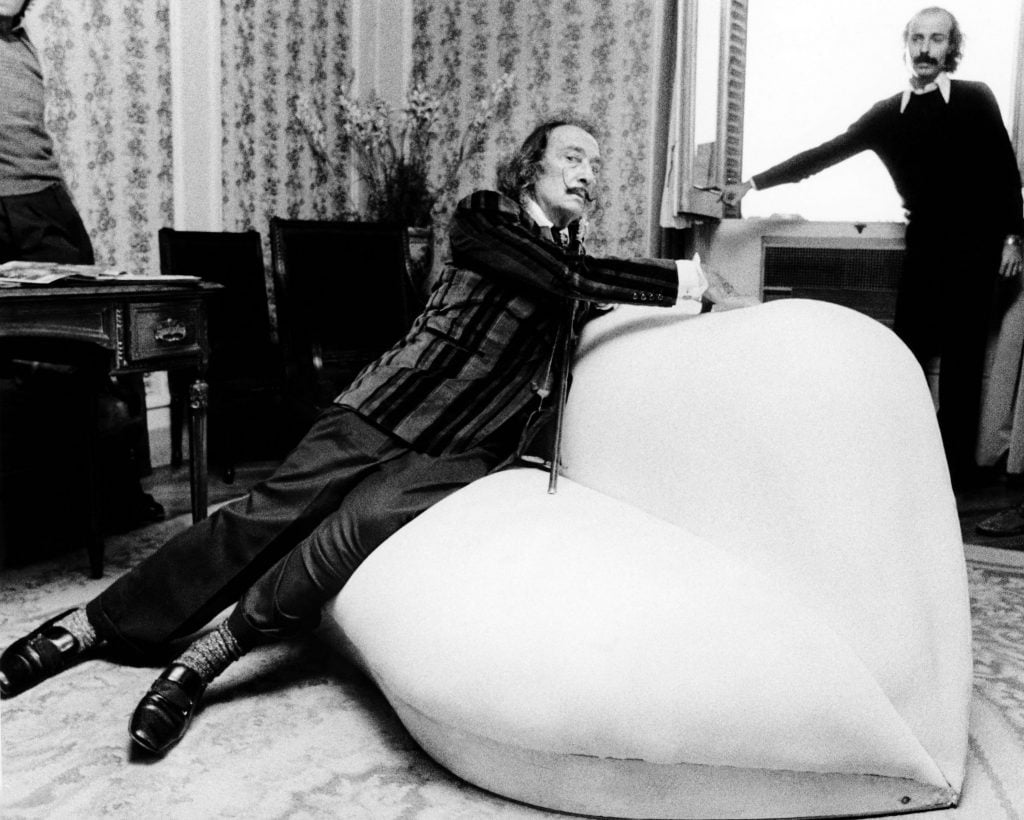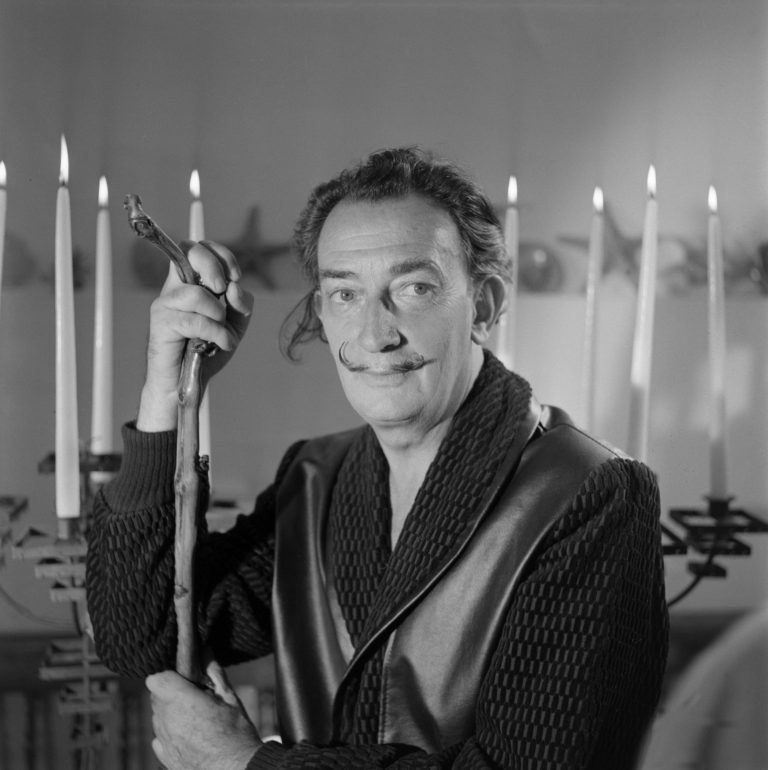[ad_1]
Planning a dinner party to welcome the spring? If you hope to signal to your friends and any new acquaintances that you are up to date with the latest trends, then it’s time to put together a Dalí-inspired “surreal soirée.” According to the social media site Pinterest, this is the most coveted tablescaping look for 2025.
The platform noted that searches for “Salvador Dalí aesthetic” have been through the roof of recent: a staggering 40 percent increase in interest, leading trend forecasters to conclude that more people “will infuse their tablescapes” with such items as “curvy candlesticks, fantastical flowers, and gravity-defying centerpieces.” Is this the year that we collectively channel the ever more surreal news cycle into home decor?
If you are trawling for inspiration on how to make your evening banquets a touch more bizarre, then look no further than the site’s “butter candelabra.”
You’ll be sure to impress and intrigue your guests by chucking your butter dish in the trash and, instead, spending the evening prior slathering the dairy product around that candelabra you probably have knocking around in a spare drawer. Some online influencers have demonstrated how fancy decorative elements can be added with a piping bag, and the final product will be ready to whisk out the fridge just as the doorbell rings.
So what would Dali have made of “surreal soirées”? He certainly was known to have attended a few, not least the infamous Surrealist Ball thrown by the Rothschilds in 1972 at Ferrières, their shooting estate just east of Paris.
The Rothschilds’ Surrealist Ball, 1972. Photo: Legendary Parties by Prince Jean-Louis de Faucigny-Lucinge.
Archival photos from the event will certainly spice up your mood board, if you care to take inspiration from the hostess Baroness Guy de Rothschild with such accoutrements as a stag trophy shedding diamond tears affixed to her head, or service plates made of fur. Other tablescaping touches included Surrealist statues in lieu of flowers, arrangements of broken dolls, and blue tablecloths covered with clouds in a stylish nod to Magritte.
Dalí, of course, arrived as himself, reportedly explaining, “I don’t need a mask. My face is my mask.” The modernist master lived as he painted, with extravagance, gusto, and no shortage of weirdness. From the pet lions he canoodled to the perfume he requested dropped onto his eyelids to encourage colorful dreams, he is a font of inspiration for the neo-surrealist set. Here’s a closer look at some of the styles he endorsed.
Mae West as Muse

Room styled as Mae West at the Dalí Museum-Theater in Figueras, Spain. Photo: Quim Llenas/ Cover/ Getty Images.
Though Dalí had created pieces of furniture and other design objects in his paintings for some time, it was the British poet and art collector Edward James who convinced him that some of these items ought to enter into reality. James hoped these new three-dimensional artworks could fill his country estate Monkton House in West Sussex. The best-known example to come from this collaboration between artist and patron were five versions of the Mae West Lips Sofa, which are currently held in museum collections across Europe and Australia.

Salvador Dali sitting on his Mae West sofa. Photo: AFP via Getty Images.
Conceived in 1937, the plush red and pink couches were inspired by one of Dalí’s recent collages, Mae West’s Face which May be Used as a Surrealist Apartment (1934-35), which conjured a wacky sitting room out of the iconic Hollywood actor’s facial features. Dalí saw West as the ultimate sex symbol, and it’s easy to see why he was beguiled by her subversively outré approach to obscenity, not least for a woman of her time, as well as by her pithy one-liners.
Collaborations with Schiaparelli

Left: The Lobster dress from 1937 designed by Elsa Schiaparelli and Salvador Dalí. © Philadelphia Museum of Art. Right, Salvador Dalí, Lobster Telephone (1938). Photo West Dean College of Arts and Conservation. © Salvador Dalí, Fundació Gala-Salvador Dalí, DACS 2022
Dalí’s collage that inspired the Mae West sofa had originally been intended as a draft design for the apartment of fashion designer Elsa Schiaparelli, with whom the artist collaborated extensively. Each saw a kindred spirit in the other, which allowed them to indulge in their mutual desire to surprise and provoke. Among legendary pieces of women’s fashion that the pair created was the 1937 Lobster Dress, designed for the socialite Wallis Simpson and inspired by Dali’s Lobster Telephone surrealist sculpture, created the previous year.

Left: Schiaparelli shoe hat designed in 1937. Photo: ullstein bild via Getty Images. Right: Ariana Grande performing in her custom Schiaparelli gown. Patrick T. Fallon / AFP.
One fun example of art imitating life, and Dali’s capacity to inject the surreal into the everyday, is Schiaparelli’s Shoe Hat (1937-38), created after a photograph of Dali wearing a woman’s high-heeled shoe on his head, with the other resting on his shoulder. The fashion designer flipped the shoe up so that its long heel rises comically into the air. That instantly iconic design is also trending today, as performer Ariana Grande donned a custom Schiaparelli dress for her Wicked performance at the 2025 Oscars which flowed from a 3D shoe sculpted at the back of her ruby red dress.
Unusual Jewels

Madelle Hegeler shows off striking jewelry by Salvadore Dali in New York. Photo: Bettmann via Getty Images.
As if painting, sculpture, design, and fashion collaborations, and generally living his life like a piece of living art, weren’t enough, Dali is also well known for turning his hand to jewelry. He made 39 pieces between 1941 and 1970. One example is The Eye of Time from 1949, one of many pieces that mimic human features. True to it’s name, it contains a tiny clock inscribed with the artist’s signature.
The most famous among Dali’s many idiosyncratic but precious pieces is The Royal Heart (1953), a golden heart topped with a crown with a central cavity encrusted with 46 rubies. Most shockingly of all, the object gives the impression that it is beating thanks to an internal electrical mechanism.

A model (ca. 1955) wearing jewellery designed by the Surrealist artist, Salvador Dali. Photo by Baron/Hulton Archive/Getty Images.
“Without an audience, without the presence of spectators, these jewels would not fulfill the function for which they came into being,” Dali once remarked. “The viewer then, is the ultimate artist.”
[ad_2]
Source link


